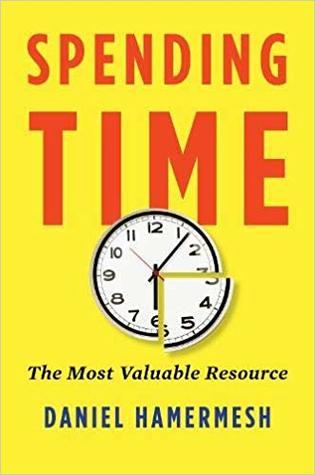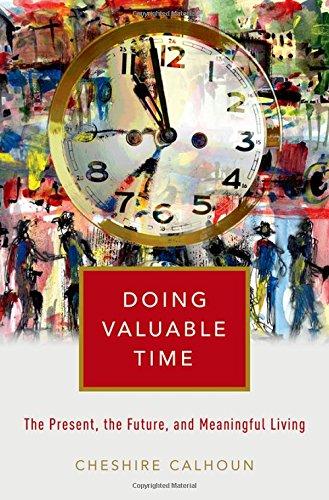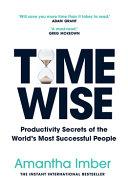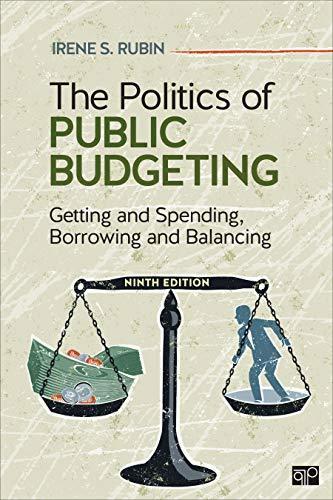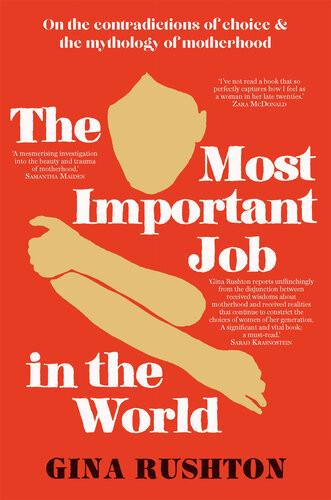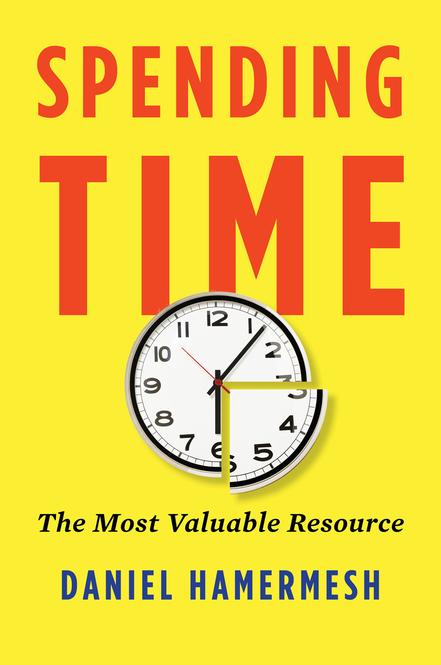1
Oxford University Press is a department of the University of Oxford. It furthers the University’s objective of excellence in research, scholarship, and education by publishing worldwide. Oxford is a registered trade mark of Oxford University Press in the UK and certain other countries.
Published in the United States of America by Oxford University Press 198 Madison Avenue, New York, NY 10016, United States of America.
© Oxford University Press 2019
All rights reserved. No part of this publication may be reproduced, stored in a retrieval system, or transmitted, in any form or by any means, without the prior permission in writing of Oxford University Press, or as expressly permitted by law, by license, or under terms agreed with the appropriate reproduction rights organization. Inquiries concerning reproduction outside the scope of the above should be sent to the Rights Department, Oxford University Press, at the address above.
You must not circulate this work in any other form and you must impose this same condition on any acquirer.
Library of Congress Cataloging-in-Publication Data
Names: Hamermesh, Daniel S., author.
Title: Spending time : the most valuable resource / Daniel S. Hamermesh. Description: New York : Oxford University Press, [2018] | Includes bibliographical references and index.
Identifiers: LCCN 2018027022 (print) | LCCN 2018028064 (ebook) | ISBN 9780190853846 (UPDF) | ISBN 9780190853853 (EPUB) | ISBN 9780190853839 (hardcover : alk. paper)
Subjects: LCSH: Time—Social aspects. | Time management. Classification: LCC HM656 (ebook) | LCC HM656 .H36 2018 (print) | DDC 650.1/1—dc23
LC record available at https://lccn.loc.gov/2018027022
Printed by Sheridan Books, Inc., United States of America
CONTENTS
Preface vii
1. You Can’t Always Get What You Want 1
2. What We Do When We’re Not Working 15
3. How Much Do We Work? 33
4. When Do We Work? 45
5. Women and Men 55
6. Togetherness 73
7. “The Last of Life, for Which the First Was Made” 87
8. The Perennial Issue and an Old/New Concern 103
9. E Pluribus Unum? 117
10. The Rich Are Different from You and Me 133
11. Kvetching about Time 151
12. Do We Have More Time Now? Will We Get More Time? 163
13. What Is to Be Done? 177
Notes 197 Index 213
PREFACE
Scholarly articles about time are abundant: in the economics literature since 2000, over 6,700 published articles include the word “time” in the title.1 Many books deal with time already, some with attractive titles that I might have used here. That made finding a title for this book difficult. There are also a few scholarly monographs that deal with specific aspects of people’s time use.2 Given all these efforts, why yet another book on time? The best answer is that how we use time and why we make choices about time should be fundamentally interesting questions for everyone. Time and money are the two scarcest things in everyone’s life, and in most countries incomes have grown greatly over the past fifty years. Time has not.
No book has discussed the panoply of ways that we use time and how those differ among countries, and none has tried to explain why people differ in their use of time.3 Economic thinking can explain patterns of time use and do so in ways that are totally comprehensible to any adult. They are even comprehensible to teenagers (as discussions with my fifteen- year-old grandson demonstrate). While the issues may be complex, they are readily understandable because they affect us all: we can empathize with the behavior of people making decisions about time, because we make them ourselves all the time. Deciding when to wake up, how much to sleep, how many meals to have, and when to have them are just a few examples of the decisions about time that we all make. We base these decisions on the incentives that we face because of the scarcity of time, even though we rarely consider why or how we are making those decisions. “Time itself is neutral; it can be used either destructively or constructively,” so that our decisions about time affect our well-being and that of other members of our society.4
The US now has what is in many ways the best information in the world about how its citizens spend their time. Before 2000, many other countries, and the US too, had very occasional surveys in which respondents kept diaries that were completed on the next day and recorded what they
were doing at each point of the previous day. These time-diary surveys were useful indicators of what people did. But they were not produced on a continuing basis; intervals between them were irregular; the few produced at irregular intervals were not always comparable within the same country, including the US; and most, including the few American studies, did not cover many people.5
When I began working on time use I remarked that the US was in the derrière garde in the creation of data that allow chronicling how people spend time. That is no longer true. In 2003, the American Time Use Survey (ATUS), a product of the US Bureau of Labor Statistics (BLS), began collecting time diaries each month that are completed by about a thousand randomly chosen Americans ages fifteen or over, in which they record their activities on the previous day. With this survey the US has created a continuing record of Americans’ spending their time. No other country has done this, so today the US is clearly in the avant garde in its provision of the information with which to analyze its citizens’ decisions about spending time. I use the ATUS for the years 2003–2015, about 170,000 diaries, throughout this study, so that original calculations based on the ATUS underlie many of the statistics presented, obviating the need in these cases to refer to the underlying set of data. I am extremely grateful to the Minnesota Population Center and the Maryland Population Research Center for producing the ATUS data sets based on the raw BLS data.
American scholars are remarkably ethnocentric in their concentration on domestic issues, in far too many cases basing general conclusions about people’s behavior solely on results produced using American data. And because of the predominance of American scholarship worldwide, especially in economics, scholarly research too often gives the impression that we have learned something about people’s behavior generally, when in fact we have only learned about the behavior of the less than 5 percent of the world’s population that resides in the US.
If Americans’ use of time were representative of time use worldwide, or at least of that in other rich countries, there would be no problem. As I show throughout the book, though, along some dimensions Americans use time much differently than do citizens of other wealthy countries. To demonstrate these differences, and to understand how people generally spend time, on most of the topics that I discuss I also present evidence based on time diaries kept by people elsewhere. While I use information from many countries, including Australia, Canada, Italy, Japan, Korea, the Netherlands, Portugal, and Spain, most of the comparative analysis relies on original calculations using time diaries collected in three large wealthy European countries: France (Enquête emploi du temps, 2009–2010,
about 24,000 diaries); Germany (Zeitverwendungserhebung, 2012–2013, about 25,000 diaries), and the United Kingdom (Time Use Survey, 2014–2015, about 16,000 diaries). In some cases, I use these data instead of the American data because the latter lack information on some crucial aspects of time use. I thank the Centre Maurice Halbwachs in Paris, the Statistiches Bundesamt in Wiesbaden, and the Multinational Time Use Survey of Oxford University for providing these data sets. Here too, when I refer to calculations for each of these countries, I am referring to calculations based on these particular sets of data.
With much of the discussion based on previous analyses of data or on new analyses using these four sets of data, the question is how to present the results in an interesting and readable way. From my experience teaching more than 25,000 undergraduates over the past fifty years, I’m convinced that figures—pictures— work better than tables of numbers. For that reason, there are thirty figures in the text but no tables at all. There are also none of the equations that are so beloved by economists. The figures are completely self-explanatory, and the reader should be able to infer the message of each figure at a glance. Because of my technological incompetence, the figures were drawn by other people, with Yonah Meiselman offering tremendous help.
I began working on questions about people’s use of time in the late 1980s, publishing in 1990 two scholarly articles on the subject, both based on US time-diary information from the mid-1970s. Since then I have been continually studying questions related to time use, increasingly in conjunction with other economists. Many of the ideas in this book and much of the information presented come from these joint efforts. The volume would not have been possible without the ideas and labor that these scholars have supplied over the years. Thus Jeff Biddle, Hielke Buddelmeyer, Michael Burda, Ana Rute Cardoso, Katie Genadek, Reuben Gronau, Daiji Kawaguchi, Jungmin Lee, Caitlin Myers, Gerard Pfann, Mark Pocock, Joel Slemrod, Elena Stancanelli, Stephen Trejo, José Varejaõ, Philippe Weil, and Mark Wooden have all published scholarly work with me that provides the basis for some of the arguments here. While it wouldn’t be fair to implicate any of them as coauthors, their work and inspiration clearly made this book possible.
Other people too can be thanked as “unindicted co- conspirators.” A Barnard student, Mia Lindheimer, made a useful suggestion; and our New York neighbor, Kevin Hyams, made a very helpful point. George Borjas offered help on Chapter 8, and Pierre Cahuc provided good comments on chapter 10. David Pervin, who has shepherded this book from its inception, commented in detail on every chapter and greatly improved the book’s
organization. My sister, Deborah White, caught some errors in the final draft. My wife, Frances Witty Hamermesh, read every word in the first and second drafts and greatly improved the logic of the exposition and the arrangement of the ideas.
Throughout the discussions I motivate the issues by anecdotes, things that I have observed that illustrate in daily life how we spend our time and help us to understand why we make the decisions that we do. Many of these come from my wife’s and my experiences and interactions. Others stem from the behavior of our daughters-in-law Amy and Hannah Hamermesh, and our six grandchildren, Jonathan, Samuel, Miriam, Yonah, Noah, and Raphael Hamermesh, all of whom also offered suggestions about the book’s title. Many more come from things that our two now middle-aged sons did as children and from activities that they have engaged in as adults. It is to our sons, David J. Hamermesh and Matthew A. Hamermesh, that I dedicate this book.
Daniel S. Hamermesh
Austin, June 2018
Spending Time
CHAPTER 1 w
You Can’t Always Get What You Want
Time and numbers have intrigued me since I was a little kid. When I was four my parents bought me a watch—analog, of course, as digital didn’t exist in 1947. They taught me how to tell time, which got me “hung up” with concerns about time. That same year my maternal grandmother taught me to play the card game Casino. I learned how to add (at least up to ten) and became fascinated by numbers at an early age. This interest grew into complete nerdiness by my teen years: when I was fourteen my sister (also a nerd—now a college math instructor) and I spent one month of summer vacation tabulating the frequency of given names in the local telephone directory.
Those two concerns (my wife calls them obsessions) play out regularly in my life. Today I had a lunch appointment with someone across Manhattan. I spent $2.75 in subway fares, only for the other person not to show up. That small amount of change was a minute fraction of the cost of this fiasco, which took an hour of my time. If I could get work at the US minimum wage for that hour, I would have made $7.25. And even if I couldn’t have found work, I could have used the time to do something that I value more highly than subway travel and waiting for someone— which is almost everything. Quite literally, I was spending time, and the time spent cost me much more than the $2.75 subway fare. Because time is scarce, using it costs us money. We spend time.
But how much time do we really have? Most people in wealthy countries are born with an expectation of eighty plus years of life. When we are young, most of us feel that time is endless. Who can’t remember sitting around in summer vacation from grade school trying to find something
to do? Yet as we age, time seems to accelerate: on my forty- fifth birthday I remarked to my sixteen- year-old son, “Time is going faster and faster than it used to.” His response was, “Yeah, Dad, that’s because you’re going downhill.” We can ignore the wise-guy nature of his comment, but he was correct about my accelerating physical deterioration.
My son only hit on half the story, though. There are also fundamental changes in our attitude toward time that occur throughout most of our adult lives, and these changes condition much of what we do with our lives. They arise from the changing incentives that we all face as we grow older, and these in turn result from changes in the amount that we can earn for each hour of work, how much our partners can earn for their work, and the growing scarcity of time because we have fewer years of life left to us.
Everything is scarce— we want more of everything, including love, money, recognition, and power. Someone who denies being interested in at least one of these is laboring under self-delusion. Among these things that are essential to our satisfaction, time is the one that we are least conscious of, yet it is scarcest of all. Everything we do eats up time, and this scarcity is something economists can provide useful insights about. One purpose here is to demonstrate how that scarcity affects what we do—how we split our time among different activities—and when we undertake them.
We think that certain ways of spending time are beyond our control: we must sleep eight hours per day; we must eat three meals per day; we must work eight hours per weekday. No doubt there are other “natural” requirements that we have in mind. But this is just wrong: we have choices to make even in these activities, and those choices arise from our subconscious efforts to get the best outcomes in terms of making ourselves as happy as possible. Those outcomes depend on the limits that the available time imposes on us, on our opportunities for earning money to finance our activities, on the choices that those with whom we associate— family, friends, fellow workers, and others—make, and on the resources at our disposal for making these choices. The Mick Jagger and Keith Richards 1969 song “You Can’t Always Get What You Want” made these limits very clear.
The economic approach to thinking about time (and everything else) conceives of people making decisions, either consciously or more often unconsciously, that are designed to make themselves as well off as possible. We are limited in our choices by the time available to us each year and by the remaining length of our lives. We are limited by the income that we can earn, the amount of other income we and our partner—if we have one— can contribute, the family circumstances that we have chosen to create, and the prices of the things we might want to buy.
Whenever we choose to buy a Big Mac we are choosing not to use our income to buy something else, perhaps a Whopper with cheese. The same is true for time: when we choose to spend two hours attending a concert we are choosing not to use those two hours to get some more sleep or to go for a long run. Just as we face trade- offs in the things we buy, we also face them in the time that we spend in different activities. We “trade off” one activity for another.
IS TIME REALLY SCARCE?
How can I claim that time is scarce? It is true that there are only 24 hours in a day and 365 1/4 days in the average year, but most people know that over the last century or so, people in today’s wealthy countries have been living longer. And people in countries that have not achieved the same level of wealth as Western democracies are also living a lot longer.
Despite these gains, the amount of time that we can expect to enjoy over our lives—a total of about forty- two million minutes—is not that much higher than it was even fifty years ago. Look at Figure 1.1, in which the
Figure 1.1 Gross Domestic Product (GDP) Per Capita (2010 US$) and Life Expectancy, US and UK, 1960–2014
Source: http://data.worldbank.org/indicator/SP.DYN.LE00.IN; http://data.worldbank.org/indicator/NY.GDP. PCAP.KD
solid bars show the expected length of life for the average person born in each year in the United States or the United Kingdom, two wealthy countries, between 1960 and 2014. In both countries average life expectancy has risen—but by “only” 13 percent in the US, and by only 14 percent in the UK. On a per- year basis, longevity increased by 0.2 percent in both countries on average.
These are remarkable increases in life expectancy, but compared to the increases in spending power per person, they are tiny. The striped bars in Figure 1.1 show the level of income, after accounting for inflation, that has been available to the average citizen of each country. This income level is the actual amount of command over available goods; it shows how much we could buy if we spent every dollar or every pound that we had. This disposable income rose by 198 percent in the US and by 193 percent in the UK over this fifty- four- year period, on average at a rate of nearly 2 percent per year. After inflation spending rose at about the same rate as after-inflation incomes in both countries. This change means that our spending power per year of life has nearly tripled during this roughly half- century. Put another way, our time is now worth more—it is more valuable—and increasingly scarcer than the incomes we use to buy things.
These comparisons are not unique to rich countries, where we know that incomes rose unusually rapidly over this period. A similar set of comparisons yields the same conclusions for Brazil and Mexico, examples of large middle-income countries. Life expectancy in these countries improved more rapidly than in the rich countries—in Brazil by 37 percent over this fifty- four- year period, in Mexico by 34 percent—annual average rates of increase of 0.6 percent in each. After-inflation incomes also rose in each country, but much more rapidly than life expectancy—by 244 percent in Brazil and 155 percent in Mexico, more than tripling in Brazil, more than doubling in Mexico.
Our ability to purchase and enjoy goods and services has risen much more rapidly than the amount of time available for us to enjoy them. The more rapid growth in income than in the time that we have at our disposal creates a problem for us: it makes it difficult to stuff all the things that we want and can now afford into the growing, but increasingly relatively much more limited, time that we have available to purchase and to enjoy them over our lifetimes. We have more dollars per minute of life than our grandparents did—a lot more. And that means that time is scarcer for us— it has become more valuable.
With higher incomes and only a bit more time, we can engage in more different activities in each hour of time than our predecessors. Even if we spend no money, the cost of an hour of time itself is higher for us than it
was for our grandparents. Even if we do nothing, an hour of time is costly— it has an “opportunity cost”—because we could use it for something other than just lying around. The idea of opportunity cost is illustrated to me every day when I walk by the empty parking place that we own in our building’s garage. We could rent it out for seventy dollars a month, but we don’t; even though we pay no money for the spot, leaving it empty—not using it—effectively costs us that seventy dollars every month.
WHAT DOES THIS SCARCITY MEAN IN OUR LIVES?
We think of credit cards as saving our time—no need, for example, to write monthly checks for utility and other bills. Not always the case: in the 2010s, perhaps because I had published economic research about how people use time, US government attorneys asked for my help as an expert witness in two lawsuits. One was against a company that had allowed security breaches enabling incorrect charges to be billed to customers’ credit cards.1 My initial reaction was, “Why me? What do I know about credit cards?” The attorneys pointed out that it takes time for credit- card users to correct an incorrect billing. In the other case, repeated security lapses at a company caused credit- card providers to shut down consumers’ accounts. This forced the company’s clients to arrange for new credit cards. Anyone who has ever lost a card or had one stolen or shut down knows that starting a new card takes time. If the card is used to pay recurrent bills that are charged directly, such as telephone service, cable service, and other bills, the time spent in getting the credit- card problem rectified is even greater.
The question in both cases was how to value the time that customers spent getting their credit- card bills corrected. Ignoring the fact that you incur the pain and suffering of spending fifteen minutes listening to dreadful music while waiting to spend two minutes with a “customerservice representative,” your time on the phone could have been spent doing something else. And that alternative might at least yield a bit of enjoyment; also, it would be something that you chose to do, not something that was imposed on you by some company’s negligence. Because the time could have been used for some alternative activity, it has value. And its value exists because it is scarce; the time you have at your disposal to enjoy an alternative becomes more limited because of the offending company’s carelessness. The court recognized the validity of this argument in the one case that went to trial and ordered the company to pay damages—a small amount per plaintiff but tens of millions of dollars in total— to the large class of people who had been damaged by the company’s behavior.
The importance of the scarcity of time exists in every aspect of our daily lives. Last night my wife and I were walking home from a restaurant and had to detour across a street because a large construction project had closed the sidewalk. This detour added an extra minute to our homeward journey—obviously a tiny burden on us. But these snippets of time add up. If one hundred people per day are forced to take the detour, and the project runs for two years, over twelve hundred hours of time are wasted. Valuing their time at even only half of the US minimum wage, that is nearly four thousand dollars of cost that the construction company foisted off on the public. We bear the cost of the project—our time could be better used (from our own points of view) than in needlessly crossing the street. We are essentially being forced to use our time to save the construction company the cost of creating a setback while the project is underway.
Just as companies’ activities can cost us time, so their and governments’ activities can bestow more time on us and reduce the time scarcity that we face. One of the main arguments for such projects as bridges and highways is that they will save their users time. And in each case that time should be valued, precisely because the time that the project has freed up is valuable to us. It is a benefit that the construction project creates for all of us. The necessity of valuing the time saved is why the US government explicitly requires its agencies to include calculations of the value of the time that will be saved as a way of justifying a newly proposed project.
Many research studies have used estimates of how people respond to changes in their commuting time— their willingness to pay for reductions in time spent sitting in cars— to value public projects that will ease commuting. As anyone who has sat in a traffic jam on the way to or from work will attest, this valuation makes sense. The recent addition of express lanes with toll charges on a freeway in Austin, Texas, for example, showed that some people are willing to pay as much as five dollars to speed up their ten-mile commute. This switch of autos to the toll lanes— this willingness of people to spend a little money to spend less time— validates thinking about the value of time in this activity too.2
Whenever a company’s or a government’s negligence costs us time, or a company’s or government’s activity yields us some unexpected free time, the scarcity of time changes for us. With less time at our disposal, we need to give up some lower- value activities that we might otherwise have undertaken. With a “time gift,” we can indulge ourselves in uses of time that we otherwise would not have enjoyed. If we understand how the world that we face— the changing incentives imposed by time, and especially the growing scarcity of time compared to spending power— will affect how we spend our days, we can make ourselves better off and even happier.
ARE WE AWARE OF ALL THIS?
We could pay attention to the value of time if we are aware of the rising incomes and less rapidly rising longevity that we face, and the increasing relative scarcity of the time available to us. If we are not aware of these changes, we are unable to plan how to spend our money and how to use our time in a way consistent with making ourselves as happy as possible. We might wind up with a huge amount of income left over late in life, the result of our failure to account for the relative increase in income compared to the smaller rise in length of life. There is nothing wrong with having a huge amount of our lifetime earnings remaining when we die—if we planned on that. But as much as we love our children and grandchildren, it does seem like a waste to leave them money simply because we are not aware how rapidly our income will have grown over our lifetime. The existence of the large industry of retirement advisors and financial planners suggests that these concerns matter to us greatly— that we are willing to spend so that we can choose the best combinations of spending of our time and incomes.
Given the importance of “getting it right” to make ourselves as happy as we can, it shouldn’t be surprising that people have pretty good information about what will happen to their incomes and to the years available to them. Take expectations about their incomes. A few studies have asked young people whether and to what extent they are aware that their earnings will rise as they age into their careers. Their expectations tracked the actuality quite closely: as a simple example, teenagers seem to know that their first full- time job will not be their highest paying.3
Most young people are also keenly aware of the higher incomes that they can expect if they obtain a college degree. They know that college grads earn more than high school grads; they even know very well which college majors will yield higher earnings throughout a career. They recognize, for example, that liberal-arts majors typically earn less than students specializing in accounting or finance.
People are clearly aware that getting additional education and moving up a career path raise their incomes. But it’s a subtler question whether they also know that the average college graduate at age forty in 2030, for example, is likely to earn more after-inflation dollars than her friend who was born ten years earlier will earn in 2020, just because living standards on average are rising over time. The US Federal Reserve conducts regular surveys of random samples of Americans about how they expect their incomes to change over the next year.4 Except during the Great Recession, large majorities believe that their incomes will grow, a belief that reasserted
itself in the mid-2010s. People are aware that they are likely to do better in the future than similar Americans have done in the past or are doing now.
People’s expectations about how long they will live are also pretty accurate, despite the sharp increases in longevity that have occurred over the past hundred years. In the early 1980s I surveyed a random sample of economics professors, getting information on their age and gender, and asking them how long they expected to live.5 The older people knew that they would survive to a later age on average than the younger economists— they understood that, having survived the risks of young adulthood, their expected age at death was greater than it had been earlier in their lives. More important, they were able to forecast, based on the increases in longevity that occurred between 1950 and 1980, that they would live to a greater age than those born before them.
It is no surprise that economists can forecast well—that is supposed to be part of their expertise. But another survey, sent to a random sample of residents in a mid- size Midwestern metropolitan area, showed the same thing. These typical middle Americans understood that, having survived thus far, they could expect to live to a later age than they would have expected earlier. They were even aware that life expectancy had been increasing over their lifetimes, and they were able to project that increase into the future.
People have a good understanding that the incomes and time available to them will change over time. Whether they can account for these changes when deciding how to spend their time and money is another question, one that I examine throughout this book. In doing so I examine all the ways that we spend time, how they have changed over the years in response to the changing incentives generated by the changing incomes and time available to us, and how they differ because of differences in characteristics and preferences among individuals. Disentangling the importance of personal characteristics and economic conditions, whether of individuals or of the national economy, and such factors as unemployment, and their effects on work opportunities, is important: without doing so we can’t determine how purely economic changes, such as growing inequality of earnings opportunities, will affect how we choose to spend time.
We are clearly aware of our growing incomes and rising life expectancies; since our expectations track both incomes and life expectancies closely, implicitly we are aware that we face a rising relative scarcity of time. More important is whether we know that this scarcity changes our incentives to use time— whether we act upon the information that we apparently have. Answering this question—examining how the scarcity of time and the incentives that scarcity generates alter how we spend time—underlies much of the discussion in this book.
WHAT ARE THE DIFFERENT WAYS WE SPEND TIME?
Ask yourself: What do I do with my time? What are the different things that I spent yesterday doing? Imagine you are asked: How much did you sleep yesterday? How much did you work (for pay) yesterday? How much TV did you watch yesterday? There is a good chance you would give answers that total much more, or much less, than twenty- four hours, which is not physically possible, except on that one day each year when your country starts or leaves Daylight Saving (Summer) Time, giving you twenty- three or twenty- five hours on that day. To measure correctly how people’s time is spent, it is necessary to limit their answers— to force them to provide estimates that add up to the twenty- four hours at their disposal on most days. For one hundred years, researchers have been doing this— collecting “time diaries”—asking people to record, typically on the next day, what they were doing at each moment of the previous day. Much of the focus, including that of what was the first professionally collected set of diaries, has been on accounting for and valuing time spent outside the workplace.6
These diaries have been collected in substantial detail in at least forty countries, with much of the pioneering research being done in Communist Eastern Europe in the 1960s. For many years the US was a laggard in obtaining information on how its citizens spend their time. No more. Since 2003, a monthly federal government survey of roughly a thousand randomly chosen individuals has allowed us to get a detailed picture of how Americans spend time. Each person in these samples records on the next morning what they were doing at each time between 4:00 a.m. of the previous day and 3:59 a.m. of that morning. They write down descriptions of their activities, and government researchers code these into over four hundred very specific categories of time use. These data are now available for over 190,000 people. Similar but less extensive data for many other rich countries, and even diaries for many less- wealthy countries, underlie research by economists and others who study time—and the bulk of the calculations, data, and discussion in this book.
While I pay special attention to how Americans spend time, I also present many analyses and snapshots of how people in France, Germany, and the United Kingdom use their time. Information on time use in Australia, Italy, Japan, Korea, the Netherlands, Portugal, and Spain also forms the basis for some of the discussion. Looking at so many wealthy countries has the advantage of indicating how the ways that people spend time—the decisions we all face—are nearly universal. But it also demonstrates the extent to which Americans use their time differently from people elsewhere.
A serious difficulty with discussing time use is that it is not easy to classify time. What we call “work” might be a mix of different activities that add to what we or our employers produce, or it might be goofing off, exercising, or socializing with our co- workers. Sleep might be uniform, or time reported as “sleeping” might consist of sleeping, tossing and turning, having sex, or going to the bathroom. The over four hundred categories of time use recorded in the US data contain very detailed information on the kinds of activities that people do. The US surveys divide “sleep” into sleep and sleeplessness, and “work” into regular work, exercising at work, leisure at work, and clean-up at work. Other countries’ surveys, including the French, German, and British surveys, go into varying lesser amounts of detail on these and other activities. Regardless, in discussing any use of time we need to think first about how finely we want to divide the activities that we consider.
We spend much of our time multitasking. We eat and watch TV; eat, watch TV, and care for a young child; exercise and listen to music; surf the web and telephone a retailer. Indeed, almost all activities that we undertake, if we think about them carefully, are done simultaneously with one or even several other activities. If we are asked which single activity we are engaged in at some point in time, how we answer depends on what we view as the most important (to us, at that point in time) of the several things that we are doing simultaneously. For the preceding examples, my guess is that most people would list eating ahead of watching TV, caring for a child ahead of watching TV, reading ahead of listening to music, and telephoning ahead of web surfing. Any diary that lists a single activity at a point in time is reflecting only one of the things that a person is doing at that time, the single activity deemed most important, even though the person may be doing other things simultaneously.
If we keep these caveats in mind, time diaries give important insights into what people consider to be the major activities in their lives. Most of us don’t spend much time thinking about the things that we spend the most time on. On the most time- consuming activity— sleep— the average American does just about the eight hours that conventional wisdom suggests, reporting sleeping 8 1/3 hours on weekdays, but there are huge differences across the population. Ten percent of American adults report sleeping six or fewer hours in their diaries, while another 10 percent say they slept ten hours or more on the day for which they kept a diary. The US is typical in sleep being the single most important activity that people spend time on. In the UK the average adult sleeps only slightly less on weekdays than the average American. There too, large fractions of the population report sleeping six or fewer, or ten or more hours. Our stereotype about a
“normal” sleeping time of eight hours is correct for the average American and for the average person elsewhere, but it masks the huge amount of variation among adults in the amount of z’s that they typically get.
That people behave differently does not demonstrate that their behavior arises from different responses to the incentives that time scarcity produces. But with this much variation in the amount of time that people spend sleeping, the scope for scarcity and incentives to be generating some of the differences is huge. And later I show that some of the differences in how much people sleep can be attributed to differences in the incentives that they face— the fact that sleeping an extra hour involves a trade-off against other activities, including working, which might make us happier than another hour of sleep.
The second most common activity that Americans undertake is work for pay—over four hours per weekday by the average American adult. That figure seems low, but on many days even people who think of themselves as workers are not working, and only a little more than half of all American adults report doing any work at all on any particular weekday. The average Briton works only slightly less per weekday, and work for pay is the second most time- consuming activity for the average individual in all rich countries. Later I examine how much of differences among people in the amounts they work is determined by the incentives that they face, and how much by their country’s culture and their personal characteristics.
Another 2 2/3 hours of the average American’s time are spent watching television, whether television shows or movies rented or streamed. The time devoted to this leisure activity is typically less on average in other rich countries—in the UK, for example, it is “only” 2 1/3 hours. Still, taken together, sleeping, working for pay, and television watching, just three of the myriad activities that people might engage in, account for nearly two- thirds of the time that Americans have at their disposal, and for only slightly less in other rich societies.
When we perform different things matters and is the complicated result of our preferences, social pressures, biological effects, and the incentives that the changing scarcity of time over the day, across the week, and even over a lifetime, creates.7 Spending an hour on an activity at 9:00 p.m. is different from spending an hour on the same activity at 3:00 a.m. In the case of TV, watching Monday Night Football is much better live than in a rerun in the middle of the night. Sleeping during the day may be biologically difficult; worse still, sleeping then certainly means that we are out of action when most of our fellows are active— we are out of sync with most of society. It would also mean that, if we work for pay, we are doing so at a time when most of our fellow workers are not on the job.
In addition to how much and when we do things, demographic differences, including differences by gender, race, ethnicity, or geographic location, in how we spend time are important. The news media, and presumably the customers who are devoted to them, are interested in how people in different demographic groups behave, how they live, and what they do. Those differences occur not just because people belong to different cultures. They arise in part from the incentives generated by variations in the scarcity of time across groups as they age, when they are partnered and/or have children, and other circumstances independent of the value of their time. They illustrate how our personal characteristics affect the choices that we are free to make about how we use our time.
One of the most salient characteristics in our lives is our age. You might think that time seems less scarce when you are twenty than when you are forty- five, since you have so many more years to live. It probably does, but personal experience tells me at age seventy- five that time also seems less scarce than when I was forty- five, even though I am very aware that I have fewer remaining years of life now than I did thirty years ago. In societies where an overwhelming majority of citizens can expect to live into old age, societies that represent a growing share of the world’s population, the role that age has in affecting how people choose to spend their time has increased in importance.
Most of us do not make decisions about how we use time by ourselves. Instead, we make them at least partly in conjunction with our partner, with other family members, and/or with friends. Being a social animal requires being with other animals in our species. And unless we have total control over others’ uses of time, our choices about how we spend our time must in part be determined by the preferences and incentives facing those with whom we want to associate. This seems obvious in the case of activities that require two or more people— such as most sexual activities, a tennis game, or a football match. It is also true for eating and, most important, for working. It means that decisions about time use are essentially social decisions, if “social” means involving at least two people.
Money— the amount we earn, the amount our partner earns, and the amount we can receive from interest or dividends on our wealth—is what people associate most with economics. And income is crucial in determining how we spend our time. That makes it essential that we examine all the ways that differences in incomes affect the kinds of things we spend time on and the time of the day, week, and year when we spend that time. Moreover, spending income takes time. You can’t enjoy an instant vacation or a sixty- second Mahler symphony; you can’t sleep or shower instantly; and even some activities for which you might hire someone are often more
pleasurable, or done more efficiently, if you do them yourself. Think of reading Hippos Go Berserk to your two-year-old (at least on the first twenty readings!). That means that differences in income will alter not just the amounts that we purchase but also the kinds of things we buy—and when we buy and consume them.
While time is real, our ways of measuring time are an artifice. Citizens of most countries that are spread widely from east to west, like the United States, have chosen to divide the land into time zones with artificial demarcations, leading to what are really time borders. Time zones affect the ability of a country’s citizens to interact efficiently. And, just as both partners in a couple or all friends in a social group must make decisions about how to spend time, some activities require that citizens in different time zones at least implicitly make decisions together. The effect of time zones on our use of time is something we ignore, but the impacts on sleeping, working, and TV watching— the “Big Three” uses of time— may be large. Being in Boston, in the US eastern time zone, may by itself lead us to behave differently than if we were in San Francisco, in the Pacific time zone.
Given the importance of time in our lives, we might paraphrase Charles Dudley Warner (not his coauthor Mark Twain, who usually gets credit for this line): “Everybody complains about time [the weather], but nobody does anything about it.” In fact, we do more than just complain about the weather— we seed clouds and alter climates by our activities. Similarly, we complain a lot about time. We alter time’s impacts on our lives by changing technology in ways that, without our expecting them, affect how we spend time. We as individuals have the power to make choices that will alter how the scarcity of time affects our lives. We cannot stop the flow of time, but we can limit the impacts of its scarcity on our everyday lives. Both individually and as societies changing our policies, we need to know how we can do this.
CHAPTER 2 w
What We Do When We’re Not Working
There are two dimensions to thinking about how much time people spend on each of the Big Three— sleeping, working for pay, and watching TV. One is their incidence—how many of us spend any time at all on these activities during the day. Another is their intensity— the amount of time that we spend on the activity if we do it at all. To understand the distinction between incidence and intensity, think about rainfall. Both Detroit, Michigan, and Austin, Texas, average 32 inches (810 millimeters) of rain per year. But there are 135 rainy days in an average year in Detroit, and only 88 in Austin. The incidence of rain is less in Austin; it rains less frequently, but when it rains, the rainfall on the rainy day is heavier—more intense.
Except for sleep, which nearly all of us do each day, there is tremendous variation in the incidence of nonwork activities—in the percentage of people engaged in them—and the intensity of time spent by those who do them. And this is important: if all of us spend ten minutes per day engaged in religious devotions, the total time spent would be the same as if one- twelfth of us spent two hours per day in those activities. The average amount of time is the same per person, but in the first case the country would be considered uniformly somewhat religious, while in the second a small minority of the population would be viewed as devoutly religious, with the majority being viewed as nonreligious. The first society would be more socially cohesive than the second—people would be doing more similar things.
When we do something is also important. Watching a sporting activity with few other fans, because it is a workday, is less fun than being
in a packed stadium on a Saturday cheering on the home team. Many religious activities cannot take place unless sufficient other devotees participate. This means that the same activity can become inherently different depending on whether it is undertaken on a weekday or a weekend, or at daytime or nighttime. For that reason, we need to look at when various activities are performed as well as how many people are doing them and how much time the doers spend on them.
We think in categories— the human mind organizes knowledge into pigeonholes. With the myriad possible ways of spending our time, we need some principle for organizing our thinking about time use. For nearly one hundred years, economists have viewed our activities as falling into four broad categories: 1) work for pay, 2) home production, 3) personal care, and 4) leisure. Work for pay is obvious; it’s the activity that—for most of us— finances all our other activities. Home production, sometimes called household production, includes activities that we could pay others to do for us.1 The category includes such common activities as caring for our kids or aged parents; shopping, cooking, or cleaning up the dishes; and walking the dog. The crucial distinction here is that these are things that we could “outsource”—they meet what economists call “the third-party criterion,”— we could pay others to do them.2 Whether we do these things ourselves or instead outsource them depends on how much we enjoy doing them, how good we are at doing them compared to a person whom we might hire, how much and what it costs us to pay others, and what it costs us to do them ourselves— that is, the time that we could have devoted to doing something else. We may not outsource any of these, but we could. Either way, it’s a choice that we must make.
Personal care includes activities that are human biological necessities, such as sleeping, eating, or having sex. It makes sense to include such activities as washing up and grooming as personal care, since nearly all of us spend some time doing them. Moreover, we cannot usually pay people to do personal care for us— to benefit from them, we must be physically present. You can pay someone to comb your hair or apply makeup to your face; you can pay somebody to have sex with you. But your own time must be spent being groomed, and you cannot pay somebody to have sex for you. The old Russian line referring to a place where “even the tsar goes on foot” demonstrates this. Although some tsars may have had servants carrying them there, they still had to spend their time getting there.
The fourth and most diverse category of activities is leisure, which essentially includes anything that we typically do not have to do, that we enjoy, and that we cannot outsource— that is, something for which we must be present and perform ourselves. This catch-all category includes
TV watching, playing sports and exercising, reading, listening to a concert, attending a sporting event, and many others. That one cannot outsource them seems clear in many cases: cartoonist David Sipress showed the impossibility of contracting out leisure activities, depicting a grumpy man on a couch reading a book, with another man pointing to him and saying, “That’s the guy I hired to read Proust for me.”3
But there are many other leisure or personal activities that we can contract out. Even though it seems a bit weird, for a small financial contribution I can pay someone to say kaddish (the Jewish prayer reaffirming belief in God after a relative’s death) in Jerusalem on my mother’s behalf rather than doing it myself at a religious service. Roman Catholic priests in poorer countries will offer Masses in memory of the departed relative of some Western parishioner. As with any mechanism for accounting, it is not always clear how to categorize some activities.
PRODUCING AT HOME
There are many things that we could find someone else to do for us. A personal shopper, a laundry service, and a personal accountant could remove some of the burdens of spending time on home production. There are nannies to relieve us of time spent in childcare, cooks to relieve us of time spent in food preparation, and maids to clean for us. One can even imagine being sufficiently wealthy that a butler and her minions could relieve us of all tasks so that we would have to spend none of our own time on any of these activities. How much time would that save us? Would it free us up to do more fun things?
Consider the basic activities of food preparation and cleanup, purchasing/shopping, managing the household, and caring for kids. Not surprisingly, their incidence and intensity vary tremendously, as Figure 2.1 makes clear. On a typical day a bare majority of Americans spend any time at all preparing food and cleaning up.4 And since most of us eat at least one meal a day, this means that a lot of us are relying on other people to prepare that meal. Either a spouse, a roommate, or a restaurant’s staff is using their time to save us the time of cooking and cleaning up afterward. Even those who do prepare food or clean up themselves do so for only one hour per day. This is a remarkable contrast to the situation of women in human prehistory or even through the early twentieth century, when preparing meals took up a large fraction of women’s time.
Shopping is also not something that most people do on a randomly chosen day: only 44 percent of Americans report shopping on any given
